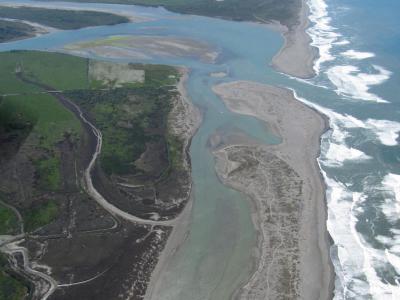Gold Country — Legacy Mining Impacts and Restoration Strategies
Session Coordinator:
Jay Stallman, Stillwater Sciences
Overview: Large scale surface gold mining in the Klamath-Siskiyou region and western slope of the Sierra Nevada profoundly altered landscape form and process: streams were dammed, diverted or drained; soil and vegetation was stripped over large areas; piles of coarse mine tailings reduced floodplain inundation; and excessive sediment loading massively aggraded and armored stream channels. Many of these impacts persist today, with severe and enduring effects on critical habitat for salmon species. Effective recovery of at risk salmon populations in river ecosystems extensively impacted by mining requires careful assessment and planning. This session will feature presentations exploring the persistent impacts of legacy gold mining on thermal regimes, fluvial processes and channel morphology, and channel and floodplain habitats; as well as restoration strategies being implemented to address these legacy effects.
Assessing Legacy Impacts of Hydraulic Mining in the Sierra Nevada - a 20-year Perspective
Jennifer A. Curtis, U.S. Geological Survey, California Water Science Center
Gravel, Gold, and Fish: Reclaiming California’s Gold Fields
Rocko Brown, Ph.D., Environmental Science Associates
Restoration Progress and Opportunities for the Yuba River Goldfields
Gary Reedy, South Yuba River Citizens League
Gold Mining, Extreme Floods, and Geomorphic Context of the Trinity River, CA
Andreas Krause, Yurok Tribe
Riparian Area Rehabilitation after Gold Mining
John H. Bair, McBain Associates
Quantifying Legacy Impacts on Summer Stream Temperatures and Potential Riparian Reforestation Strategies
Rosealea M. Bond, Department of Forestry and Wildland Resources, Humboldt State University

